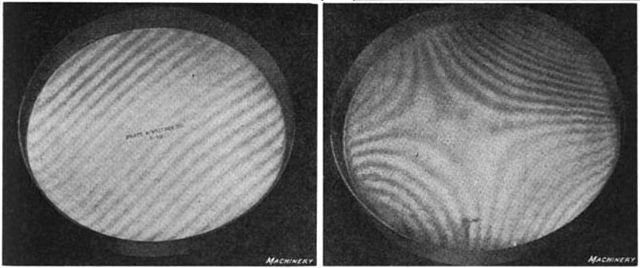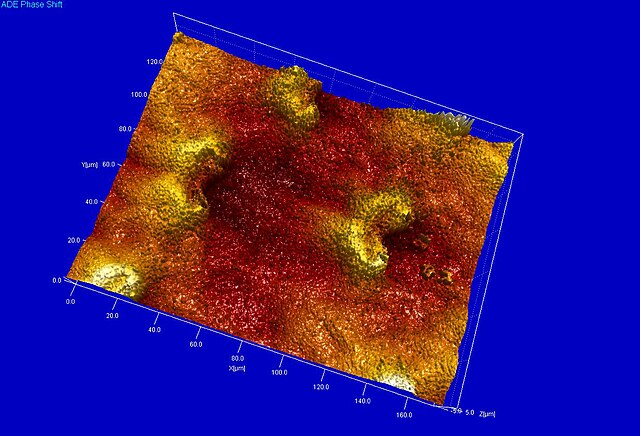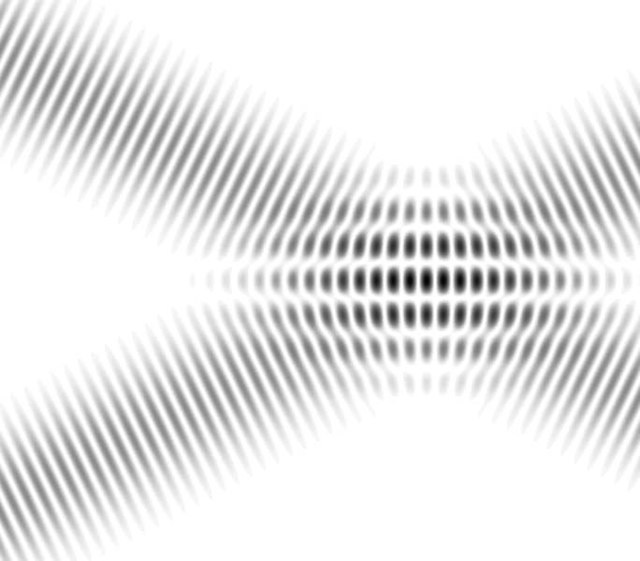Interferometry is a technique which uses the interference of superimposed waves to extract information. Interferometry typically uses electromagnetic waves and is an important investigative technique in the fields of astronomy, fiber optics, engineering metrology, optical metrology, oceanography, seismology, spectroscopy, quantum mechanics, nuclear and particle physics, plasma physics, biomolecular interactions, surface profiling, microfluidics, mechanical stress/strain measurement, velocimetry, optometry, and making holograms.
Figure 11. The VLA interferometer
ALMA is an astronomical interferometer located in Chajnantor Plateau
Figure 13. Optical flat interference fringes. (left) flat surface, (right) curved surface.
Figure 18. Lunate cells of Nepenthes khasiana visualized by Scanning White Light Interferometry (SWLI)
In physics, interference is a phenomenon in which two coherent waves are combined by adding their intensities or displacements with due consideration for their phase difference. The resultant wave may have greater intensity or lower amplitude if the two waves are in phase or out of phase, respectively.
Interference effects can be observed with all types of waves, for example, light, radio, acoustic, surface water waves, gravity waves, or matter waves as well as in loudspeakers as electrical waves.
Photograph of 1.5cm x 1cm region of soap film under white light. Varying film thickness and viewing geometry determine which colours undergo constructive or destructive interference. Small bubbles significantly affect surrounding film thickness.
Interference fringes in overlapping plane waves
Smartphone with iridescent back panel
An oil spill








